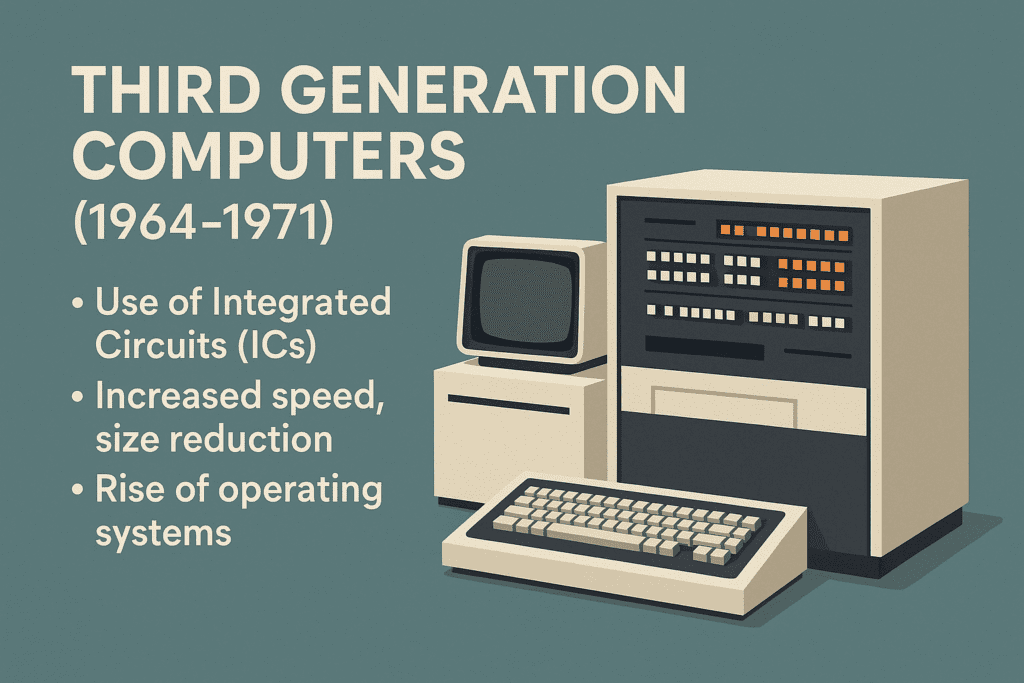As the world moved into the 1960s, computers underwent a revolutionary change—thanks to Integrated Circuits (ICs). These tiny chips significantly increased computing power while shrinking computer size, paving the way for modern computing as we know it. Let’s dive into what made third-generation computers so special.

⚙️ What Are Third Generation Computers?
Third-generation computers, developed between 1964 and 1971, used Integrated Circuits—tiny silicon chips that could hold multiple transistors. This marked a big leap from the bulky systems of previous generations.
🧠 Key Features of Third Generation Computers
- Use of Integrated Circuits (ICs) replacing individual transistors
- Significantly faster processing speed
- Compact size and better portability
- Lower heat generation
- Multi-programming capability
- Introduction of Operating Systems (OS) for better resource management
- More user-friendly interfaces
💡 Technologies Introduced
- Integrated Circuits (ICs): Allowed multiple electronic components on a single chip
- Magnetic Core Memory: Still in use, but more compact and efficient
- High-level Programming Languages: Expanded to languages like BASIC, Pascal, and C (early stages)
🖥️ Notable Examples
- IBM 360 Series – One of the most influential mainframes of the era
- Honeywell 6000 Series – Known for time-sharing capabilities
- UNIVAC 1108 – Used for business and scientific computing
These systems were faster, reliable, and better suited for real-world applications in business, science, and government.
📈 Advantages
- Faster and more reliable than previous generations
- Lower maintenance costs
- Supported multiprogramming and multi-user systems
- Reduced size meant easier installation and use
📉 Disadvantages
- Still expensive for small businesses or personal use
- Required air-conditioning and maintenance
- Programming and operations still required trained personnel
📀 Fun Fact: The Rise of Operating Systems
One of the most important milestones during this generation was the introduction of operating systems. These systems managed hardware and software resources, allowing multiple applications to run efficiently and making computing more accessible to users.
📌 Summary Chart
| Feature | First Gen | Second Gen | Third Gen |
|---|---|---|---|
| Technology | Vacuum Tubes | Transistors | ICs |
| Size | Very Large | Large | Smaller |
| Speed | Slow | Faster | Fastest yet |
| Cost | High | High | Lower |
| Heat | Very High | High | Moderate |
| Programming | Machine/Assembly | Assembly/COBOL | High-level (BASIC, C) |
🔗 Related Reads
The Early History of Computers
The Five Generations of Computers
First Generation Computers (1940–1956)
Second Generation Computers (1956–1963)
🎯 Final Thoughts
The third generation of computers was a turning point in computing history. With compact ICs and the emergence of operating systems, computers became more efficient, reliable, and ready to step into everyday life.